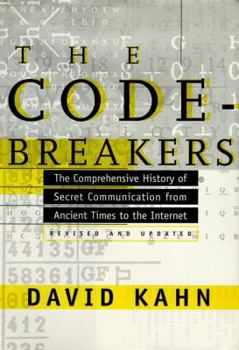The Codebreakers: The Comprehensive History of Secret Communication from Ancient Times to the Internet
Select Format
Select Condition 
Book Overview
Customer Reviews
Rated 5 starsOutstanding History of Cryptography up to 1965
This massive, exhaustively-researched book by David Kahn examines the HISTORY of cryptography from the dawn of civilization to the darkness of the Cold War. He starts an introductory bow to capture readers' attention with the Magic story (American decryption of Japanese WWII codes). Then, Kahn traces the cryptologic developments from the early most rudimentary monalphabetic substitution systems to polyalphabetics, codes,...
1Report
Rated 5 starsTruly a History
As a historian, with a particular interest in other than "American History", I found this book particularly compelling. I read the Earlier edition at least three times. Yes, I found that, at times, the text gets bogged down in minutae that may not appeal to a particular reader, but in a volume of this magnitude, with this scope, and this ambition, that is virtually a lock.What many of the reviewers don't seem to realize...
2Report
Rated 5 starsSuperb, but not perfect
This book is not intended to teach the reader how to design or cryptanalyze codes and ciphers; it is a history book, and a really great one. However, the reader should be aware of a couple of things that may not be apparent.First, the 1996 "revised edition" differs from the 1967 first edition only in the addition of a final chapter to cover what Kahn didn't know (or didn't choose to include) in the 1967 edition. The first...
1Report
Rated 5 starsThe definitive book on Cryptography.
David Kahn's newest book updates his previous work, which sits on every Cryptographer's, Cryptanalyst's, and government Special Intelligence officer's bookshelf in the entire world. If you REALLY want to how ciphers, codes, and systems are broken, Kahn is the author who tells you. Any person knowledgable in the field of Cryptology or Intelligence will tell you that Kahn' book has never been equalled. It is known as...
0Report
Rated 5 starsDefinitive history of cryptology (through mid 1960's)
This massive volume is the final word on the history of classical (non-computer) ciphers, codes, and secret writing. The book is carefully researched: 153 of its 1164 pages are endnotes. But Kahn's writing is very readable, and includes many human interest stories in addition to historical and technical treatments of his topics. Crypto buffs have never been able to understand why this 1967 book keeps going out of...
0Report














